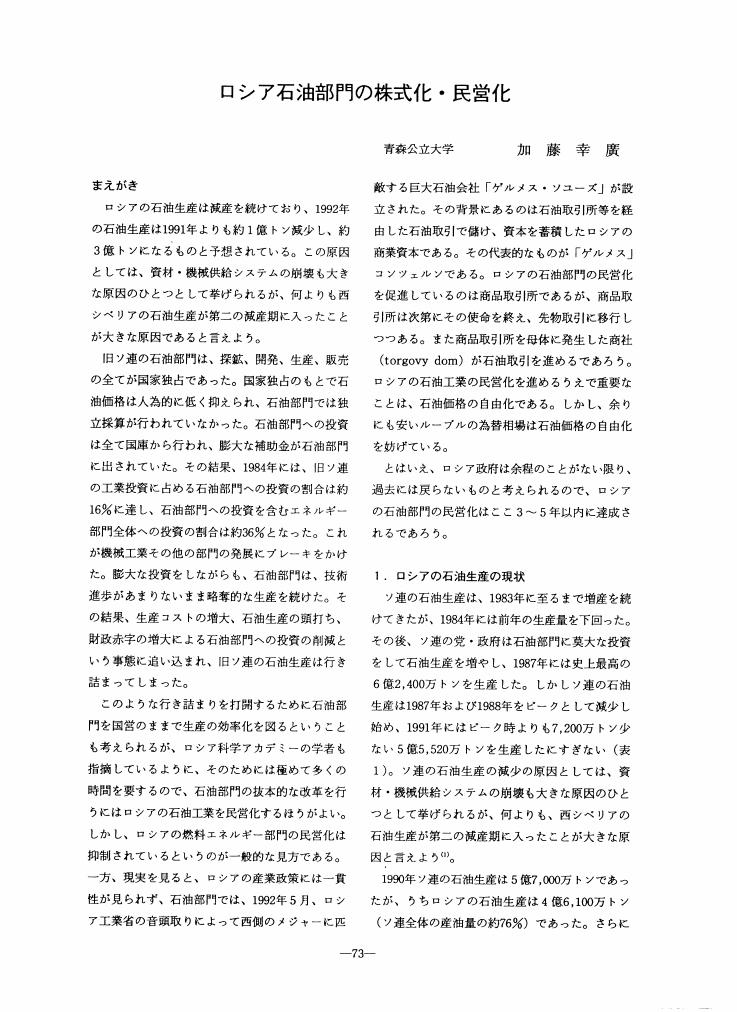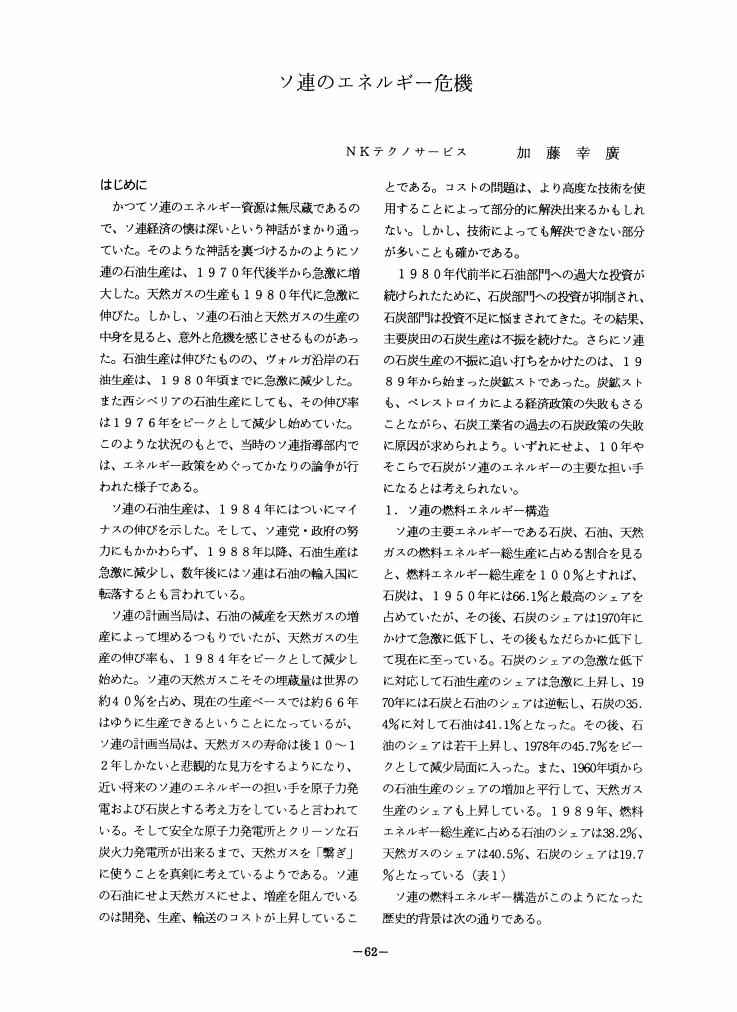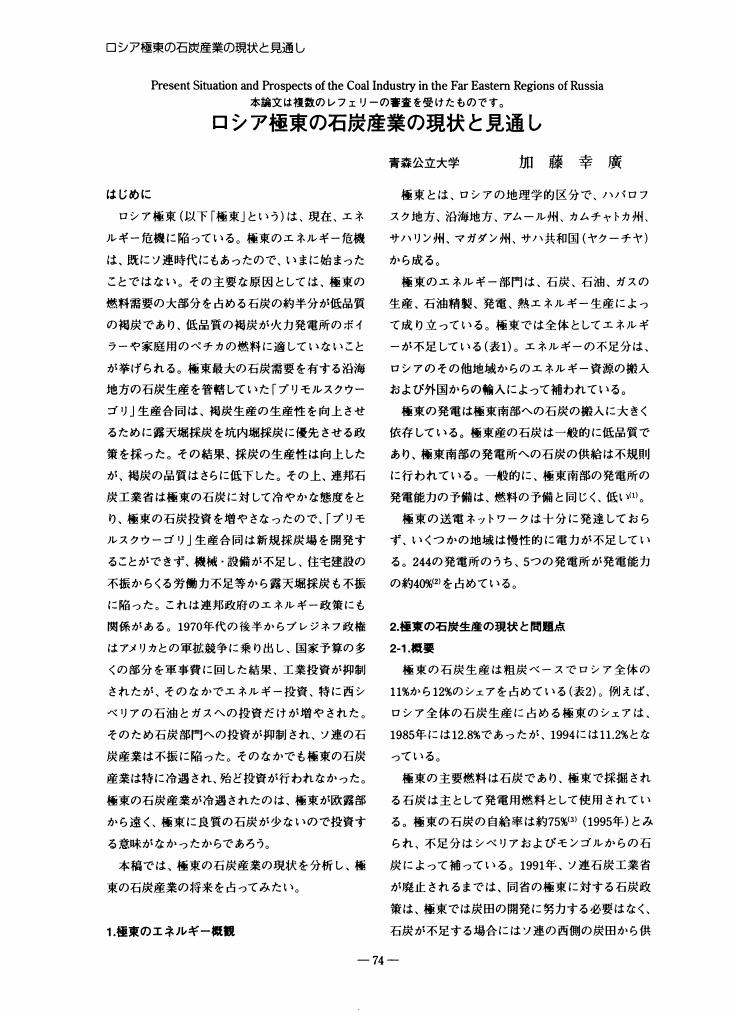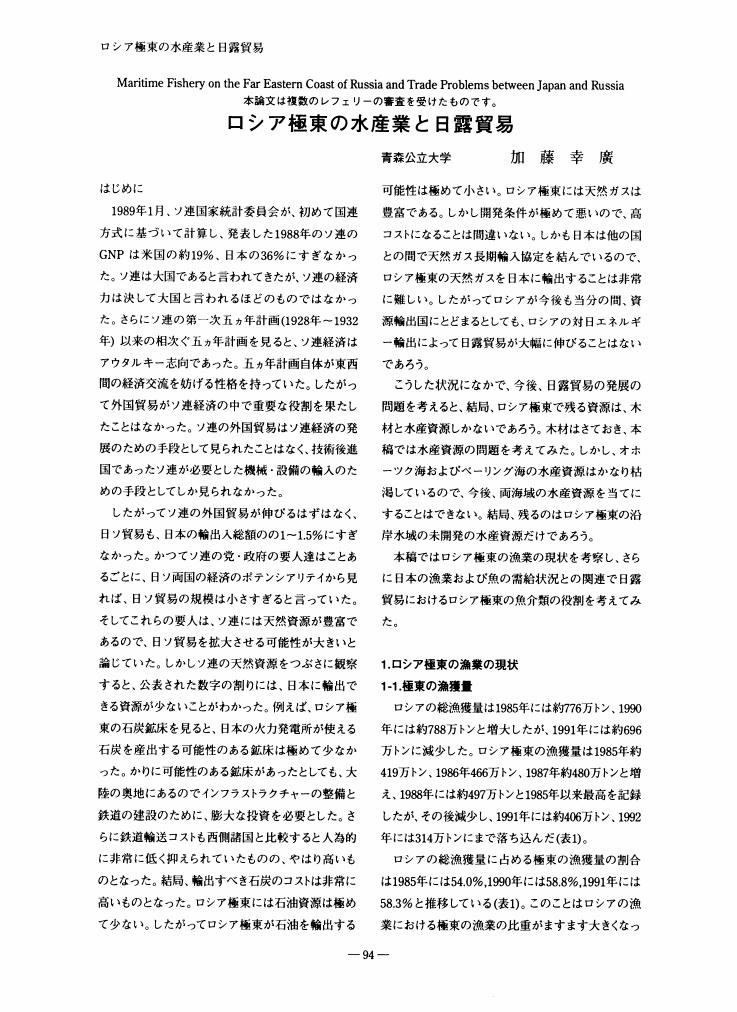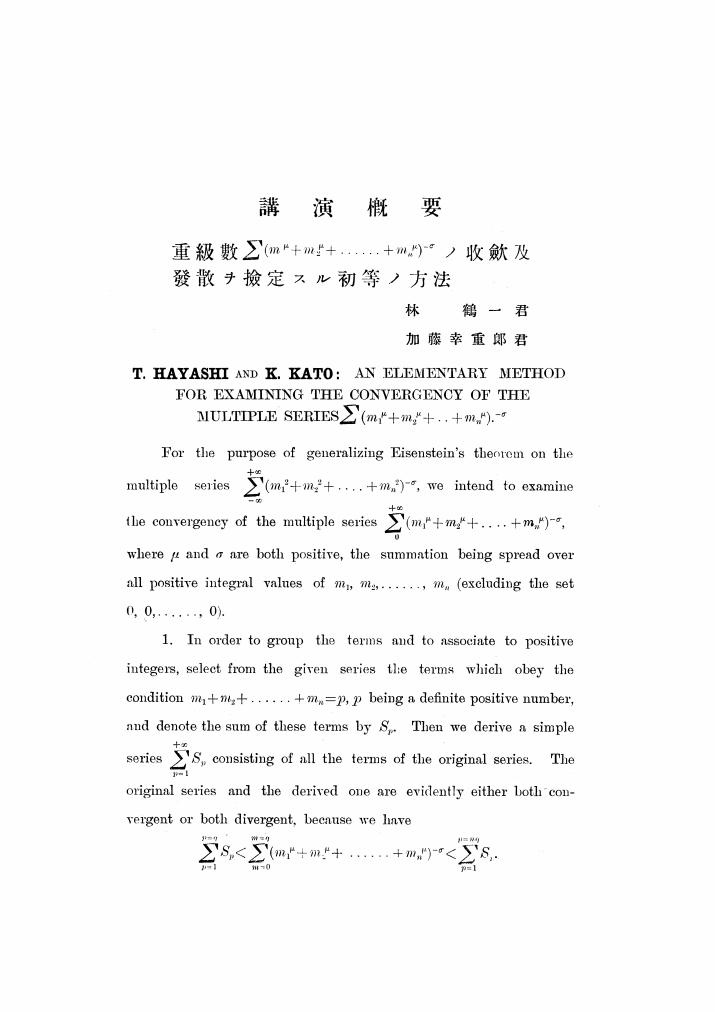1 0 0 0 OA レーニン製鉄所と十字架 ―社会主義ポーランドにおける政治と宗教―
- 著者
- 加藤 久子
- 出版者
- ロシア・東欧学会
- 雑誌
- ロシア・東欧研究 (ISSN:13486497)
- 巻号頁・発行日
- vol.2007, no.36, pp.61-71, 2007 (Released:2010-05-31)
Many studies have focused on the autonomous functions of the Catholic Church under the communist regime in Poland in comparison to other countries in former Eastern Europe. The autonomy of the church is sometimes confounded with the resistance or struggle against the communist party, although the church did not necessarily attempt to fight against the party with concerted effort. Obviously, the church is not a monolithic organization; it has to distinguish the general believers that account for most of the Polish from the leaders of the church. This paper examines how believers became involved with “the struggle, ” referring to the concept of the “collective mentality” proposed by George Lefebvre. He explained that some affairs were composed by the people, who gathered even accidentally, but because of their “collective mentality” they are capable to change the character of the activities into social and political affairs without conscious awareness.I will look, for instance, into an affair that occurred during the establishment of a parish church in an industrial estate around the Lenin Steelworks. I analyze what “collective mentality” was underlying, and how had been changed among people. For 12 years, people in this estate had moderately appealed to the party and to the administration to permit them to have their own church for practical reasons i.e. it was inconvenient to go to other churches as they were too far away, and they did not want to participate in a Mass in the snow and rain outdoors. Meanwhile they had come to clearly distinguish between the party and themselves.Generally, the affair has been recorded as a violent confrontation between the party and the church for freedom of faith. However, the believers that joined in the battle on the street said that at the beginning they only wanted to defend and keep their own cross, which they had built as a symbol of their faith. They changed their attitude gradually because of escalation of violence, and the reaction of the authorities; consequently, many of them began to agitate for freedom of faith and other political ideals. In the process of escalation, however, we can observe some accidental factors, for example misunderstandings, miscommunications and so on. After the incident, clergymen suggested that the battle had been a political fight from the beginning and the believers were motivated by political and social reasons.This case demonstrates how Catholics participated in and were involved in the political field. There were some disconnects between the clergymen and the believers; both had their own stories and values. However, we can say that people shared a “collective mentality” through their relationship with others; that is true not only for the communist party, but also for the leaders of the church. And now the shared “collective mentality” is changing in relation with the others: the different generations, some foreign journalists and us-researchers of history.
1 0 0 0 OA 戦後ポーランドにおけるコンビナート建設と都市形成 ―カトリック教会と労働者―
- 著者
- 加藤 久子
- 出版者
- ロシア・東欧学会
- 雑誌
- ロシア・東欧研究 (ISSN:13486497)
- 巻号頁・発行日
- vol.2005, no.34, pp.77-87, 2005 (Released:2010-05-31)
After World War lithe Polish government planned to reconstruct the infrastructure and accelerate industrialization and urbanization. In 1949, the Communist Party declared that they built a metallurgical complex “Nowa Huta” on the outskirts of Krakow as the main project of a 6-year plan. It was not only a symbol of industrialization and modernization, but also of a drastic transformation of Poland in every field of social life in accordance with Socialist ideology. The Communist Party thought of it as the first socialist city in Poland and propagated it like as a utopia of labours. It organized a lot of young peasants, who had neither land to plow nor work in their hometowns, to migrate to Nowa Huta. They surged into this “modern”city.The peasants, however, were mainly motivated by money-making rather than by the ideology: “struggle against the class enemy” and so on. In the early years of Nowa Huta, most young people regularly went to church with pleasure, and many of them participated in the organization of “Sluzba Polsce” (Service to Poland) . There was no ideological consistency. People sometimes behaved as young labourers or stylish town dwellers, and at other times lived as traditional peasants or devout Christians. In addition to pursuing pleasure and their own interests, they embodied different kinds of ideologies and ideals at the same time.Life in Nowa Huta was not easy because of a lack of houses and a disordered social environment. A priest described the situation as chaotic, confused, and lawless. The party started to attack the church and banned the construction of a parish and any new parish churches. Inhabitants could not have their own parish church. Why would they keep religious practices and faith under these conditions? And how?One of influential factor was catechism. Even parents who had not been to church regularly made their children prepare for their first Communion. Few people refused it. In Poland, the customs, the manner of behaviours, and the calendar are closely related to Catholicism. The church, families, and the local society consisted in religious ceremonies and annual events. These practices depending on the family and the small community strongly connected the religion with their daily lives.
1 0 0 0 OA ソ連/ロシアの外交政策とアジア太平洋の地域主義
- 著者
- 加藤 美保子
- 出版者
- ロシア・東欧学会
- 雑誌
- ロシア・東欧研究 (ISSN:13486497)
- 巻号頁・発行日
- vol.2005, no.34, pp.88-100, 2005 (Released:2010-05-31)
The purpose of this article is to examine Russia's motives and the process of its entry into the Asia-Pacific regional cooperation in the political and security area. Since the collapse of the Soviet Union, Russia has been evolving its multilateral diplomacy in this region. Today Russia participates in not only the Shanghai Cooperation Organization and the Six-Party Talks, but also the ASEAN Regional Forum (ARF) and the Asia Pacific Economic Cooperation (APEC) . In post-cold war Asia Pacific, ASEAN's Forums which respect the consensus and the voluntarism and lead the regional cooperation mechanism coexist with the traditional bilateral alliances between the United States and the countries of the region. Some of the most compelling studies have explained Russia's heightened interest in the Asia Pacific in the latter half of the 1990s from the viewpoint of NATO enlargement. This interest, however, should also be examined in the context of the political and economic relations between Russia and the Asia Pacific countries. This paper focuses on Russia's political relations with ASEAN.First, the direction toward stressing multilateral institutions has roots in Gorbachev's diplomatic concept. Pre-Gorbachev Soviet security initiatives in Asia developed from the strategy of confrontation with western military blocks or containment of China. On the other hand, Gorbachev drew the lessons from ending their confrontation with capitalism. By doing so he succeeded in improving Soviet bilateral relations with a variety of countries in the Asia-Pacific, maintaining the stability of the international environment. In particular, Gorbachev aimed to expand the bilateral economic relations between the Soviet Union and the non-socialist countries such as Japan, South Korea, and ASEAN as well as participate in PECC, PBEC, and APEC to promote its Siberia and Far Eastern socioeconomic development.Second, after the collapse of the Soviet Union, Russia was first involved in the political and security cooperation led by ASEAN before entering the economic cooperation framework. This meant Russia was needed as a guarantor of peace and stability in Southeast Asia rather than just as an economic partner in Asia Pacific countries.Third, since the late 1990s Russia and ASEAN have gradually institutionalized their relationship. In 1996, when Russian Foreign Minister E. Primakov made a speech at the annual ASEAN Post Ministerial Conferences, he described ASEAN as the most important center of a multipolar world. In the first half of the 1990s Russia had little interest in the ASEAN regional forum because Russia devoted herself to democratization and the transition to a market economy. The priority in the foreign policy was given to the relationship with Europe, the United States, and the former republics of the Soviet Union. However, the NATO enlargement in 1997 led Russia to seek its own role in international relations. On the other hand, after the Asian Currency Crisis, ASEAN, Japan, China, and South Korea have been pursuing the problem solving mechanism which is not led by United States. Russia-ASEAN relations entered a new era with Russia's signing of the Treaty of Amity and Cooperation in November 2004. To Russia ASEAN is an “electoral district” to be recognized as a vital member of the Asian Pacific community.
- 著者
- 加藤 久子
- 出版者
- The Japanese Association for Russian and East European Studies
- 雑誌
- ロシア・東欧研究 (ISSN:13486497)
- 巻号頁・発行日
- vol.2003, no.32, pp.175-177, 2003 (Released:2010-05-31)
- 被引用文献数
- 1 1
1 0 0 0 OA ロシア石油部門の株式化・民営化
1 0 0 0 OA ソ連のエネルギー危機
- 著者
- 加藤 幸廣
- 出版者
- ロシア・東欧学会
- 雑誌
- ソ連・東欧学会年報 (ISSN:03867226)
- 巻号頁・発行日
- vol.1991, no.20, pp.62-71, 1991 (Released:2010-05-31)
- 参考文献数
- 28
1 0 0 0 OA 共産主義経済の多様化と将来
- 著者
- 加藤 寛
- 出版者
- THE JAPANESE ASSOCIATION FOR RUSSIAN AND EAST EUROPEAN STUDIES
- 雑誌
- ソ連・東欧学会年報 (ISSN:03867226)
- 巻号頁・発行日
- vol.1976, no.5, pp.2-19, 1976 (Released:2010-03-16)
1 0 0 0 OA ロシア極東の石炭産業の現状と見通し
- 著者
- 加藤 幸廣
- 出版者
- ロシア・東欧学会
- 雑誌
- ロシア・東欧学会年報 (ISSN:21854645)
- 巻号頁・発行日
- vol.1996, no.25, pp.74-83, 1996 (Released:2010-05-31)
- 参考文献数
- 42
1 0 0 0 OA ロシア極東の水産業と日露貿易
- 著者
- 加藤 幸廣
- 出版者
- ロシア・東欧学会
- 雑誌
- ロシア・東欧学会年報 (ISSN:21854645)
- 巻号頁・発行日
- vol.1995, no.24, pp.94-102, 1995 (Released:2010-05-31)
- 参考文献数
- 18
1 0 0 0 OA 『万葉集』の挽歌における死にかかわる表現についての考察
- 著者
- 加藤 明
- 出版者
- 東京女子体育大学東京女子体育短期大学
- 雑誌
- 紀要 (ISSN:18816835)
- 巻号頁・発行日
- vol.47, pp.27-39, 2012-03-20
- 著者
- 林 鶴一 加藤 幸重郎
- 出版者
- 一般社団法人 日本物理学会、一般社団法人 日本数学会
- 雑誌
- Tokyo Sugaku-Butsurigakukwai Kiji-Gaiyo (ISSN:21852685)
- 巻号頁・発行日
- vol.2, no.3, pp.17-24, 1903 (Released:2006-03-27)
- 著者
- 加藤 英治
- 出版者
- 英米文化学会
- 雑誌
- 現代英米文化 (ISSN:24330728)
- 巻号頁・発行日
- vol.17, pp.1-8, 1987-02-28 (Released:2017-09-07)
- 著者
- 林 鶴一 加藤 幸重郎
- 出版者
- 一般社団法人 日本物理学会、一般社団法人 日本数学会
- 雑誌
- Tokyo Sugaku-Butsurigakkwai Hokoku (ISSN:21852677)
- 巻号頁・発行日
- vol.2, no.6, pp.17-24, 1903 (Released:2010-03-16)
1 0 0 0 OA 重級數Σ(mμ+m2μ+……+mnμ)-σノ收歛及發散ヲ〓定スル初等ノ方法
- 著者
- 林 鶴一 加藤 幸重郎
- 出版者
- 一般社団法人 日本物理学会、一般社団法人 日本数学会
- 雑誌
- Tokyo Sugaku-Butsurigakkwai Hokoku (ISSN:21852677)
- 巻号頁・発行日
- vol.1, pp.F187-F190, 1901 (Released:2010-03-16)
1 0 0 0 OA 人間・機械共学習コンセプトの提案と衛星群通信ネットワーク計画問題への適用
- 著者
- 加藤 博光 中須賀 真一
- 出版者
- 一般社団法人 日本航空宇宙学会
- 雑誌
- 宇宙技術 (ISSN:13473832)
- 巻号頁・発行日
- vol.6, pp.71-80, 2007 (Released:2007-10-31)
- 参考文献数
- 18
We propose a concept of human machine co-learning, in which the system learns the user's intention interactively, and the planner as a user learns the characteristics of the problem based on the solution represented by the system. In this paper, we propose a method to reflect the user's intention on the optimization by providing the interactive user interface connecting between "the design space", which is easier for a user to understand, and "the evaluation space", in which the system executes the optimization. We applied this idea to the NETSAT communication planning problem. NETSAT consists of existent multiple low-earth orbit satellites, and forms an ad hoc network dynamically according to the satellite position at the time when a certain communication is required. The effectiveness of our proposed method is evaluated by using the prototype system of the satellite simulator and interactive planner.
1 0 0 0 OA Micro-OLIVe地球写真のメール配信実験
- 著者
- 山本 宏 木村 真一 永井 康史 鈴木 健治 橋本 英一 高橋 伸宏 加藤 松明 高山 慎一郎 河原 宏昭
- 出版者
- 一般社団法人 日本航空宇宙学会
- 雑誌
- 宇宙技術 (ISSN:13473832)
- 巻号頁・発行日
- vol.5, pp.19-26, 2006 (Released:2006-09-27)
- 参考文献数
- 18
- 被引用文献数
- 2
研究開発活動を発展させていく上において,その意義,内容,基本的な考え方などをわかりやすく説明し,研究内容に親しんでもらう,いわゆる教育啓蒙活動は欠くことのできない重要な課題である.NICTではマイクロラブサット1号機での実験により撮影された地球画像を直接メールで配信する「マイクロオリーブ実験写真のメール配信」実験を実施してきた.本論文では,我々が実施したメール配信実験の概要を紹介する.また,配信状況と実験開始からの登録数の遷移について検討する中で,本実験の参加者がインターネットにおいてどのように広がっていったかについて考察する.さらに,アンケートなどで得られた一般の方々からの生の声から,一般の人々が本実験に対してどのような関心を持ったのかについて検討する.これらの情報には,インターネットを用いた情報提供について何が効果的か,また一般の人々が宇宙開発についてどのような関心を持っているのかといったことについての,重要なヒントが含まれていると思われる.
1 0 0 0 OA 「旅は本質的に観想的である」 三木清「旅について」におけるアリストテレス受容とその意義
- 著者
- 加藤 喜市
- 出版者
- 日本倫理学会
- 雑誌
- 倫理学年報 (ISSN:24344699)
- 巻号頁・発行日
- vol.70, pp.191-204, 2021 (Released:2021-06-14)
This paper will examine the influence of Aristotle in Miki Kiyoshi. In his philosophical essay ‘About Traveling’(in Notes on the Human Life),Miki says, “the travel is essentially theoretical” and “we will be purely theoretical in our travels.” What does Miki mean by these expressions, and what is its philosophical/ ethical significance? In the first part of the essay, Miki argues(i)the travel is a process(it is not the starting point nor the end point), that(ii)the travel is theoretical and that (iii)we feel the emotion of wonder in our travels. It seems that all of these points derive from his reading of Aristotle’s works. For, Aristotle argues in his Physics that the movement(kinēsis)is ‘the entelecheia of the being potentially X as such’ which means the movement is a process. And he thinks in the Nicomachean Ethics that the ultimate happiness for human beings is the theoretical activity(theōria),and he insists in his Metaphysics that the wondering(thaumazein) makes people do philosophy. Although Aristotle’s influence in ‘About Traveling’ is apparent, Miki’s thought is very original. While Aristotle’s arguments tend to prefer ‘end’ (telos)to ‘process’(genesis),Miki intentionally focuses on the process of the movement. This must be because Miki thinks that the life is a process like the travel and that both has the same structure. There is another difference between Miki and Aristotle. Aristotle praises the theoretical life as the best human happiness, but Miki doesn’t so. Considering the position in The Logic of Imagination which emphasizes the importance of ‘poiēsis,’ Miki should be negative about ‘theōria.’ But at least in ‘About Traveling,’ there is no critical attitude toward ‘theōria,’ and Miki’s position seems to be neutral. From the Aristotle’s description about the wondering and philosophy, Miki may use the word ‘theoretical’ as meaning ‘leading to the philosophy.’ Further, according to Aristotle’s conception of ‘the divine theōria,’ theoretical activity offers the extraordinary pleasure. Unlike the eternal god, human beings can enjoy this divine contemplation, only in the course of our travels, i.e., in our lifetimes.
1 0 0 0 OA ニーチェのいう天才とは何者か
- 著者
- 加藤 之敬
- 出版者
- 日本倫理学会
- 雑誌
- 倫理学年報 (ISSN:24344699)
- 巻号頁・発行日
- vol.68, pp.113-126, 2019 (Released:2021-05-17)
This paper clarifies Nietzsche’s sense of an ideal human by considering his concept of “genius.” Genius is a traditional concept, and Nietzsche uses it uniquely to express his ideal human in his early period. There are two important points. First, he regards classical Greek culture as the ideal environment for producing a group of geniuses, and he contends that the classical Greek philosophers from Tales to Socrates form a group of geniuses. Second, he was influenced by Schopenhauer’s concept of genius and extracts from Schopenhauer’s view on genius in many of his unpublished works. Focusing on these points clarifies the core of Nietzsche’s concept of genius as “freedom.” He perceives a genius as a free person, in which being free means freedom from others that allows a person to be himself or herself. Nietzsche was influenced by Pindar’s maxim and believed throughout his life that it is important to be oneself. Nietzsche understood a genius as a free person in the sense that she or he endeavors to be herself or himself. The idea of “being oneself” does not mean personally discovering what exists, but personally creating new things. In Schopenhauer as educator, Nietzsche indicates that true selfhood is beyond the present sense of self. Individuals who endeavor to be themselves know their orientations through the models they long to emulate and imitate the models to sublimate what the models embody into their unique forms. Through these activities, geniuses create themselves anew and as unique beings. In sum, a genius, who is Nietzsche’s ideal human, should be a free person in the sense that he or she continually endeavors to create himself or herself.
1 0 0 0 OA 未完の筌研究にみるアチック・ミューゼアムの調査法
- 著者
- 加藤 幸治
- 出版者
- 神奈川大学 国際常民文化研究機構
- 雑誌
- 国際常民文化研究叢書13 -戦前の渋沢水産史研究室の活動に関する調査研究- =International Center for Folk Culture Studies Monographs 13 -Research on the Activities of Shibusawa Fisheries History Laboratory in the Prewar Period- = International Center for Folk Culture Studies Monographs 13 -Research on the Activities of Shibusawa Fisheries History Laboratory in the Prewar Period-
- 巻号頁・発行日
- vol.13, pp.57-193, 2019-02-25
アチック・ミューゼアムには、「未完の筌研究」として語られる研究がある。残存する筌研究にかんする基礎データの調査は、戦後の日本常民文化研究所に引き継がれ、筌研究会の枠組みで河岡武春らを中心とした追跡調査が行われた。今回の共同研究においては基礎データ類の翻刻作業や整理作業、標本資料の熟覧調査を行った。「未完の筌研究」関連資料には、戦前の調査の資料として、①通信調査による「筌調査資料」、②筌に関する通信調査の発受信簿、③筌の実物の標本資料、③地図化や分類を試みた下図や手紙、調査メモ等がある。今回の調査では、①の通信調査と、③の民具との関係を調査したが、そのふたつには結びつく要素が乏しいことがわかった。渋沢水産史研究室は、海を舞台とした漁撈にのみ焦点をあてていたのではなく、農山村における河川や湖沼での内水面漁撈や氷上漁撈なども対象に含んでいた。筌研究は、民具研究としての内容以上に、田や水路、池などで行われてきた内水面漁撈の調査の一環とも位置付けられる。 筌研究は、郵便を活用した通信調査(アンケート調査)による方言調査とその分析を中心としながら、構造や部位の数の違いによる形態分類と分布の調査、漁撈の対象や場所のバリエーションの把握を中心とした内容であった。通信調査は、アチック・ミューゼアムの特徴ある調査法のひとつであり、水産史研究の「鯨肉食通信調査」「鵜飼調査」にも適用された。筌の通信調査は、これに「民具蒐集調査要目」や「喜界島生活誌調査要目」のような項目立てによる比較研究のための「筌調査要目」を立てたうえで行われた。 本稿では、「未完の筌研究」で残された資料の整理作業から見えてきた、アチック・ミューゼアムの方法論的実験について紹介したい。
- 著者
- 加藤 由作
- 出版者
- 日本学士院
- 雑誌
- 帝國學士院紀事 (ISSN:03879984)
- 巻号頁・発行日
- vol.3, no.1, pp.109-166, 1944 (Released:2007-05-30)

